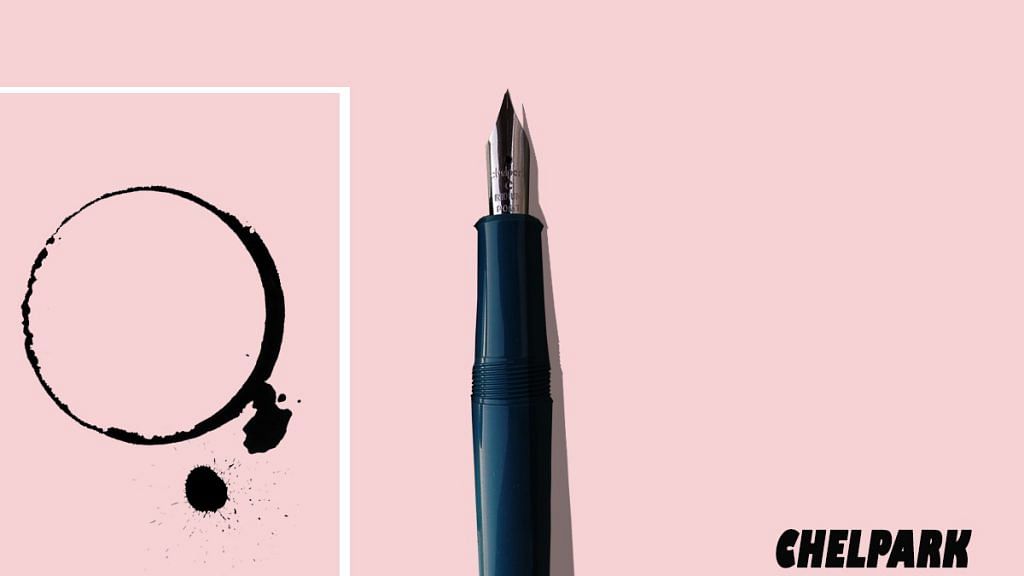Indian students used Chelpark ink and pens back when good handwriting also meant good character.
If you were born in the ‘cursive-writing era’ in India, it is likely that you have memories of four-line notebooks, stained clothes and bluish/blackish fingers. Students back then were told that good cursive handwriting signalled good character and brought more marks in examinations.
The natural progression after the slate and pencil was the haloed ink pen. More often than not, the company of the ink pen and the ink would be Chelpark. It was affordable, reliable, and most importantly, came in a variety of colours: From sapphire blue to crimson violet to emerald green.
In the ’50s, the famous Parker Pen Company was looking for an Indian partner. The Chellaram family of Karnataka was already doing business with the American company in Africa. When they were approached by the company to handle the Indian leg of Parker, they agreed but on one condition: The Chellaram family wouldn’t run the day-to-day administration. Or so the story goes.
Also read: This car was the original Ambassador of Make in India
The marriage of Parker and Chellaram resulted in the birth of Chelpark, with an office set up in Bangalore (now Bengaluru).
Brand expert Harish Bijoor credits Chelpark’s success to the company’s ink quality and the nib of Chelpark pens. Chelpark had anti-clogging, non-corrosive ink that was considered good even for premium ink pens. Everyone was using it — from the elite to school-going children. The two Chelpark fountain pens that stood out were called Moti and Sona.
“There was a time when every home in India had a bottle of ink and Chelpark was it,” said Bijoor. “The joy of writing with a fountain pen, the process of filling ink and trying out calligraphy added to Chelpark’s charm.”
When Chelpark was launched in India, the advertisement had to show that this was a new brand. The ad showed the Parker sticker peeling off from the bottle to reveal the logo of Chelpark. It was an instant hit.
The bottle itself was a glass container with a metal cap that was notorious for leaking.
Chelpark didn’t have to invest too much in TV or print advertising. Instead, they emphasised on-ground advertising. “School essay competitions, demonstrations to teachers, campus activities helped Chelpark grow its brand,” said Bijoor.
Most of us remember waiting to be promoted to fourth or fifth standard in school because we would be allowed to use ink pens. And even though it was messy, it’s what ‘adulting’ was about — learning not to mess up.
Chelpark’s competition came mainly from Camlin and Bril. Mumbai-based Camlin was a home-grown brand of ink and art supplies, established in 1931. It derived its name from a combination of ‘camel’ and ‘ink’ — because camels can endure long and difficult journeys in deserts, just like your ink should.
Also read: ‘Mera sapna, meri Maruti’ — how a car became the status symbol of a young, working India
Saumin Suresh Patel, an illustrator who dabbles in comics and animation, recalled using Chelpark ink not only for writing but also drawing.
“I remember using the blue and black ink in school days for drawing, it always had a smooth flow,” Patel said. “My only complaint was that they didn’t make waterproof ink.”
Today, Chelpark ink and pens are only available with collectors, fountain pen enthusiasts and select stores hidden in the corners of metropolises. On e-sites like Amazon a bottle of ink that once cost Rs 18, is sold for Rs 450.
No one knows exactly when the pens and inks disappeared from the shelves — but the emergence of the ballpoint pen and student-friendly gel pens certainly added to its death. First, the pens disappeared, then the inks. Parker had pulled out of Chelpark much earlier. Both Camel and Bril also diversified into other products and stationery, while Chelpark became obscure.
Also read: Binaca was a brand that brought toothpaste and music together
“Chelpark might have been the first to go, but these days the sale of pens altogether is slowing down,” said K.C. Singh, owner of Bobby Stationery store. “The stylus is the new pen.”
So long Chellaram Parker, and thanks for all the stained pockets.
